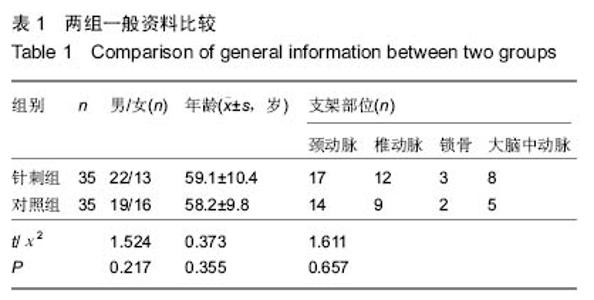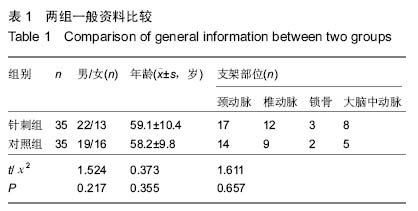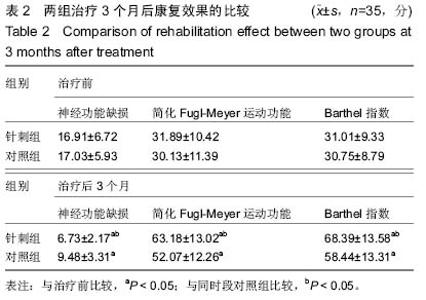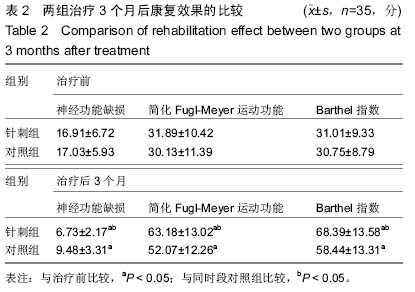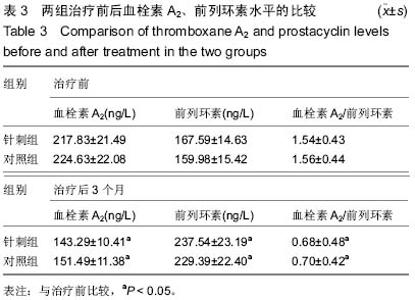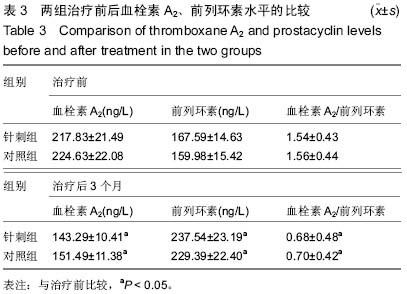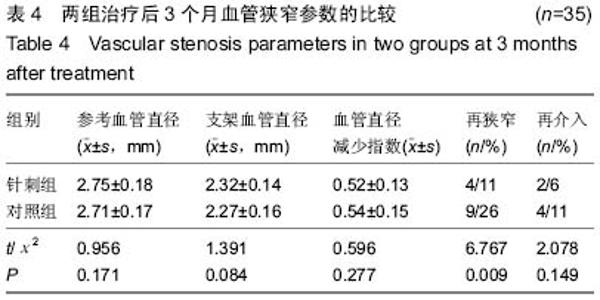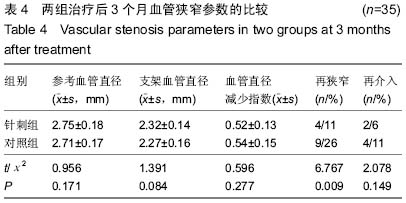| [1] Jaruszewski KM,Curran GL,Swaminathan SK,et al. Multimodal Nanoprobes to target cerebrovascular amyloid in Alzheimer's disease brain.Biomaterials. 2014;35(6): 1967-1976.
[2] Cheng TJ, Ke DS, Guo HR,et al.The association between arsenic exposure from drinking water and cerebrovascular disease mortality in Taiwan.Water Res. 2010;44(19): 5770-5776.
[3] 陈清棠.脑卒中患者临床神经功能缺损程度评分标准[J].中华神经科杂志,1996,29(6):381.
[4] 毕胜,纪树荣,顾越,等.Fugl-Meyer上肢运动功能评分与上肢运动功能状态评分的响应性研究[J].中国康复医学杂志,2006,21(2): 118-120.
[5] 李奎成,唐丹,刘晓艳,等.国内Barthel指数和改良Barthel指数应用的回顾性研究[J].中国康复医学杂志,2009,24(8):737-740.
[6] Inzitari D,Eliasziw M,Gates P,et al.The causes and risk of stroke in patients with asymptomatic internal-carotid-artery stenosis. North American Symptomatic Carotid Endarterectomy Trial Collaborators.N Engl J Med.2000; 342(23):1693-700.
[7] 罗七一,黄楚波,王帅,等.聚乳酸生物可吸收支架在静态和动态系统中降解行为的研究[J].中国生物医学工程学报,2014,33(4): 447-454.
[8] 肖荣冬,翁国星.胶原/透明质酸膜与明胶海绵支架材料力学及组织相容性的比较[J].中国组织工程研究,2012,16(25): 4637-4643.
[9] Kono K,Shintani A,Tanaka Y,et al.Delayed in-stent occlusion due to stent-related changes in vascular geometry after cerebral aneurysm treatment.Neurol Med Chir (Tokyo).2013; 53(3):182-185.
[10] 邱洪,罗彤,胡小莹,等.新型生物可降解聚合物雷帕霉素靶向洗脱支架预防支架内狭窄的动物实验研究[J].中国循环杂志,2012, 27(3):220-223.
[11] 窦克非,徐波,杨跃进,等.TIVOLI完全可降解涂层西罗莫司洗脱支架与ENDEAVOR佐他莫司洗脱支架的临床随访结果[J].中国循环杂志,2012,27(5):334-337.
[12] 王忠新,谭海颂,符伟军,等.生物可降解雷帕霉素输尿管支架修复输尿管战创伤的研究[J].中华实验外科杂志,2014,31(9): 1977-1979.
[13] 陈佳慧,沈雳,王齐兵,等.冠状动脉生物可降解支架设计与应用:材料学的进一步革新将带来什么?[J].中国组织工程研究,2014, 18(30):4878-4888.
[14] 章晓波,毛琳,袁广银,等.心血管支架用Mg-Nd-Zn-Zr生物可降解镁合金的性能研究[J].稀有金属材料与工程,2013,42(6): 1300-1305.
[15] 周力,孙颖,陈晖,等.全吸收式生物可降解支架在冠心病介入治疗中的应用[J].中国介入心脏病学杂志,2014,22(4):262-264.
[16] 谭海颂,符伟军,王忠新,等.生物可降解雷帕霉素输尿管支架对输尿管损伤后瘢痕形成的抑制作用[J].中华实验外科杂志,2014, 31(8):1766-1768.
[17] 肖国胜,王焱,叶涛,等.完全生物可降解支架置入术及术后18个月随访一例[J].中国介入心脏病学杂志,2014,22(10):673-674.
[18] 张伟,华东,张斌,等.针刺与肌电生物反馈对脑卒中后偏瘫患者步行能力的影响[J].中华物理医学与康复杂志,2012,34(2): 133-135.
[19] 周翠侠,崔晓,倪欢欢,等.针刺手三阴经穴结合功能训练改善脑卒中软瘫手功能的疗效观察[J].中国康复医学杂志,2012,27(5): 448-451.
[20] 詹燕,翟宏宇,颜起文,等.针刺结合康复训练治疗急性脑梗死吞咽功能障碍的疗效[J].临床神经病学杂志,2013,26(5):398.
[21] Hunter TB,Yoshino MT,Dzioba RB,et al.Medical devices of the head, neck, and spine.Radiographics.2004;24(1):257-285.
[22] 刁丽梅,董少龙,黄立武,等.补阳还五汤治疗中老年患者颈动脉狭窄支架植入术后的远期疗效[J].中国老年学杂志,2014,34(15): 4147-4148.
[23] Fuchs C,Ladwig E,Zhou J,et al.Argatroban administration reduces leukocyte adhesion and improves capillary perfusion within the intestinal microcirculation in experimental sepsis. Thromb Haemost.2010;104(5):1022-1028. |
